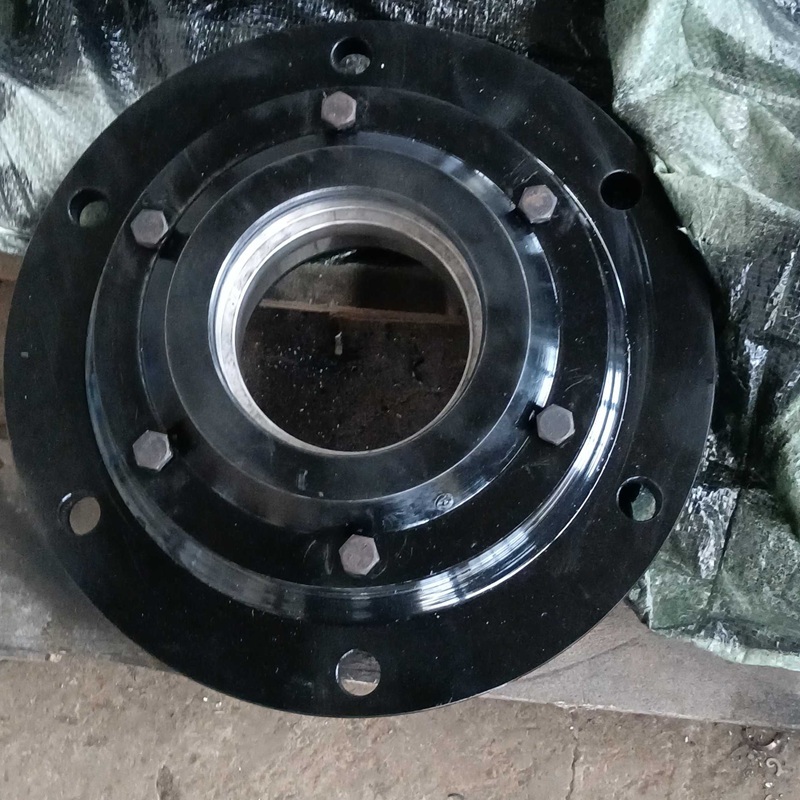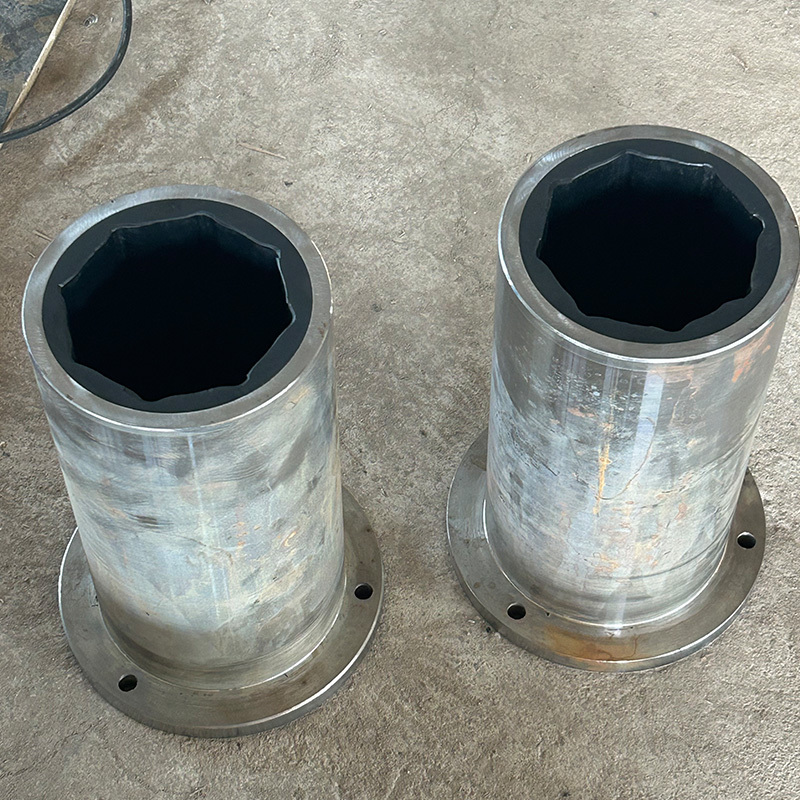The Future of Industrial Equipment: Water-Lubricated Bearings Explained
Release Time:
Apr 29,2025
The Future of Industrial Equipment: Water-Lubricated Bearings Explained As industries evolve, the demand for efficient, sustainable, and innovative solutions becomes paramount. Among these advancements, **water-lubricated bearings** are emerging as a game-changer in the industrial equipment sector. This article delves deep into the mechanisms, benefits, applications, and challenges associated with
The Future of Industrial Equipment: Water-Lubricated Bearings Explained
As industries evolve, the demand for efficient, sustainable, and innovative solutions becomes paramount. Among these advancements, **water-lubricated bearings** are emerging as a game-changer in the industrial equipment sector. This article delves deep into the mechanisms, benefits, applications, and challenges associated with water-lubricated bearings, highlighting their significance in the future of industrial equipment.
Table of Contents
- Introduction to Water-Lubricated Bearings
- How Water-Lubricated Bearings Work
- The Benefits of Water-Lubricated Bearings
- Applications of Water-Lubricated Bearings in Industry
- Challenges in Implementing Water-Lubricated Bearings
- The Future of Water-Lubricated Bearing Technology
- Frequently Asked Questions
- Conclusion
Introduction to Water-Lubricated Bearings
Water-lubricated bearings utilize water as a lubricant instead of traditional oils or greases. This **environmentally friendly** approach not only reduces the risk of pollution but also minimizes maintenance costs over time. As industries prioritize sustainability, understanding the intricacies of water-lubricated bearings becomes essential for future technological advancements.
How Water-Lubricated Bearings Work
Water-lubricated bearings operate on the principle of hydrodynamic lubrication. In this system, a thin film of water forms between the bearing surfaces, reducing friction and wear. Unlike conventional bearings, which rely on oils that can degrade over time, water remains stable and effectively cools the components, enhancing their lifespan.
The Design of Water-Lubricated Bearings
These bearings typically feature a special design that accommodates water flow. The **material** used in the bearing is crucial; advanced polymers or composites are often employed to ensure compatibility with water. These materials resist corrosion and maintain structural integrity, even in high-pressure environments.
Types of Water-Lubricated Bearings
There are several types of water-lubricated bearings, including:
- Plain Bearings: Simple and effective, suitable for lower-speed applications.
- Thrust Bearings: Designed to handle axial loads, commonly used in marine applications.
- Roller Bearings: Ideal for applications requiring higher load capacities and lower friction.
The Benefits of Water-Lubricated Bearings
Water-lubricated bearings present numerous advantages that make them an attractive option for various industries.
1. Environmental Sustainability
One of the most compelling reasons to adopt water-lubricated bearings is their reduced environmental impact. Traditional lubricants can leak and contaminate ecosystems, but water is safe and non-toxic. This feature aligns with the growing trend towards **green manufacturing practices**.
2. Lower Maintenance Costs
With water as a lubricant, there is less need for regular maintenance compared to oil-based systems. This reduction in maintenance translates to lower operational costs and increased efficiency. Industries can allocate resources more effectively, focusing on core operations rather than upkeep.
3. Enhanced Performance
Water-lubricated bearings excel in performance, particularly in environments where temperature fluctuations are common. They maintain stable lubrication properties across a range of conditions, reducing friction and wear, which leads to longer service life and fewer replacements.
4. Versatility and Adaptability
These bearings can be employed across a variety of sectors, including marine, agricultural, and manufacturing industries. Their ability to function effectively in diverse applications showcases their adaptability, making them a preferred choice for modern industrial equipment.
Applications of Water-Lubricated Bearings in Industry
The versatility of water-lubricated bearings allows for their application in several industries. Here are notable sectors where these bearings are making a significant impact:
1. Marine Industry
Water-lubricated bearings are extensively used in marine applications, such as ship propellers and rudders. Their ability to function efficiently in a water environment makes them ideal for vessels, minimizing the risk of oil spills and improving overall operational safety.
2. Agriculture
In agricultural machinery, water-lubricated bearings help enhance performance while reducing the risk of contamination. Equipment such as tractors and harvesters benefit from this technology, leading to more sustainable farming practices.
3. Manufacturing
Manufacturers are increasingly turning to water-lubricated bearings for conveyor systems and pumps. These bearings provide reliable performance, reduce downtime, and contribute to more efficient production processes.
4. Hydro-power Generation
In hydroelectric plants, water-lubricated bearings are employed in turbine systems. They help minimize friction and wear, ensuring smooth operation while harnessing renewable energy effectively.
Challenges in Implementing Water-Lubricated Bearings
While water-lubricated bearings offer numerous advantages, some challenges need to be addressed for broader adoption.
1. Material Compatibility
Choosing the right materials for water-lubricated bearings is critical. Not all materials are suitable for continuous exposure to water, leading to potential corrosion issues. Ongoing research and development are necessary to identify and enhance compatible materials.
2. Initial Cost
The upfront cost of implementing water-lubricated bearings can be higher than traditional bearings. However, this is often offset by long-term savings in maintenance and replacement costs. Educating industries about the total cost of ownership can help mitigate this concern.
3. Performance in Extreme Conditions
In some extreme operating conditions, such as very high or low temperatures, water-lubricated bearings may face performance challenges. Further advancements in technology and material science are required to enhance their capabilities in these environments.
The Future of Water-Lubricated Bearing Technology
The future of water-lubricated bearings looks promising. As industries continue to prioritize sustainability and efficiency, the demand for environmentally friendly solutions will only increase. Innovations in materials and designs are likely to enhance the performance and applicability of these bearings, paving the way for broader acceptance across various sectors.
Moreover, ongoing research into hydrodynamic lubrication principles and advancements in tribology will likely yield new insights, further optimizing the use of water as a lubricant in industrial applications.
Frequently Asked Questions
1. What are water-lubricated bearings?
Water-lubricated bearings use water as a lubricant instead of traditional oils or greases, providing an environmentally friendly and efficient solution for various industrial applications.
2. What are the main benefits of using water-lubricated bearings?
The main benefits include environmental sustainability, lower maintenance costs, enhanced performance, and versatility across multiple industries.
3. In which industries are water-lubricated bearings commonly used?
These bearings are commonly used in the marine, agricultural, manufacturing, and hydro-power generation industries.
4. What challenges do water-lubricated bearings face?
Key challenges include material compatibility, initial implementation costs, and performance in extreme conditions.
5. Is it worth switching to water-lubricated bearings?
Switching to water-lubricated bearings can lead to long-term savings and sustainability benefits, making them a worthwhile consideration for many industries.
Conclusion
Water-lubricated bearings are reshaping the future of industrial equipment by offering a sustainable, efficient alternative to traditional lubricants. As industries increasingly prioritize environmental responsibility and operational efficiency, these innovative bearings are poised to play a vital role in various applications. By understanding their mechanics, benefits, and challenges, industries can better prepare for the transition to this advanced technology, ensuring they remain competitive and environmentally conscious in an ever-changing landscape. Embracing the future of water-lubricated bearings is not just a choice; it’s a necessity for progressive industries aiming for sustainability and success.
Keywords:
More information




